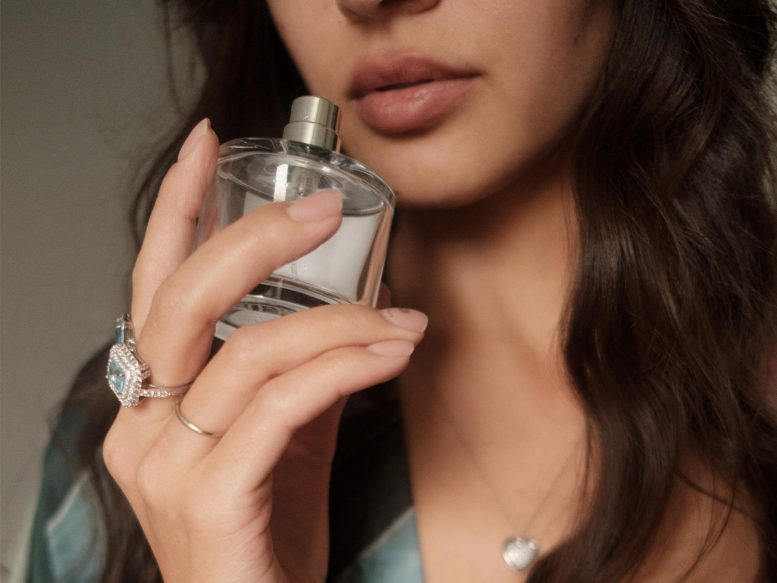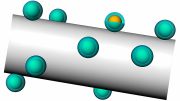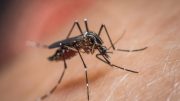
Researchers believe that not only the perception of body odor, but also of perfumes, play a role in sexual communication. After all, humans have been using perfumes for more than 5,000 years.
Scientists from the Max Planck Institute discovered that women prefer the smell of men who have different immune gene variants than they themselves have, cracking the olfactory code for partner selection and synthesizing the first biologically effective perfume.
Individual body odor plays an important role in partner selection. Humans, mice, fish and birds, and probably other vertebrates too, receive important information about a potential partner’s immune system from their body odor. A partner is chosen on the basis of whether he or she offers the optimum complement to the individual’s own immune genes. The aim is to pass on a wide variety of immune genes to the offspring so that they are resistant to a broad spectrum of pathogens. Although several hundred different forms of the immune genes exist in humans, individuals only have a few variants which co-determine their typical body odor, their individual “scent.” Scientists from the Max Planck Institutes of Immunobiology and Epigenetics in Freiburg and for Evolutionary Biology in Plön, together with colleagues from the University of Dresden Medical School, have succeeded in explaining the chemical nature of this individual scent, synthesized it and tested its effectiveness on test persons. The results show how perfumes that are completely effective biologically can be produced synthetically without resorting to animal products.
As far back as the 1990s, the Research Group working with Manfred Milinski, now Director at the Max Planck Institute for Evolutionary Biology in Plön, discovered, through the use of so-called t-shirt experiments, that women prefer the smell of men who have different immune gene variants than they themselves have. “We are unconsciously aware of how our own immune system is constituted and can recognize that of a potential partner from their smell,” explains Milinski. In further experiments, the researchers were able to show that these immune variants also determine which natural ingredients both women and men prefer in the perfumes they use. Since time immemorial, people have been very selective when it comes to choosing perfumes: They take a long time to find one and tend to stick with their choice for many years. A perfume is selected so that it will intensify the individual’s own immunogenetic olfactory signal. “If it would mask or alter the natural signal, selection would have spoiled the fun of using perfume long ago,” explains the evolutionary biologist
Natural perfume ingredients apparently contain chemical imitators of the human immune-gene-dependent olfactory signal. This explains their often rather exotic origins: for example, ambergris is produced from the regurgitated leftovers of sperm whale prey. As natural ingredients, due to their allergenic effects, increasingly have to be replaced by biologically ineffective substitutes, it would be useful to be able to analyze our natural perfume so that it can be synthesized and used as an “original” ingredient in perfumes. However, which molecules could assume the function of the human natural perfume?
In experiments on mice, the Research Group working with Thomas Boehm, Director at the Max Planck Institute of Immunobiology and Epigenetics in Freiburg, and in cooperation with other scientists, succeeded in identifying biologically effective components of the immune-gene-dependent body odor – and also detecting this mechanism in fish with their colleague Manfred Milinski.
The sensory cells of the olfactory mucosa are actually capable of identifying certain protein ligands known as peptides. These usually supply the immune system with information about pathogenic invasions – and at the same time provide a mirror image of the individual’s set of immune genes. This is related to the immune system’s recognition mechanism: the protein ligands originating from bacteria, viruses, and parasites are bound by MHC (major histocompatiblity complex) molecules, which are encoded through the different immune gene variants.
“The recognition mechanism works on the basis of the key-lock principle, i.e. each MHC molecule has protein ligands that fit it. Therefore, because certain MHC molecules are required to recognize certain peptides, the range of peptides that escape to ‘the outside’ also reflects the range of MHC molecules,” explains Thomas Boehm. This discovery meant that the researchers had cracked the olfactory code. The structure of the protein ligands can be predicted for the human immune molecules.
In their current experiment, the researchers were now able to produce the components of the body odor artificially and test its effectiveness, after having determined the nature of the immune gene variants in female test subjects. To this end, the test subjects were asked to mix the artificial protein ligands with their own armpit perspiration and to decide which variant appealed to them most. It emerged that the test subjects identified the underarm perspiration as particularly pleasant and their preferred scent when it had been mixed with the protein ligand corresponding to their own immune gene type.
Working in cooperation with researchers at the Department of Otorhinolaryngology at the University of Dresden Medical School, the scientists then examined whether the olfactory perceptions could be detected in the brain, and if so where in the brain. To this end, the Research Group, working with Ilona Croy and Thomas Hummel, applied synthetic protein ligands of either the test subjects’ own or another type, and studied their perception in the brain using functional magnetic resonance imaging. Astonishingly, a small area located in the right middle frontal cortex always responded when the test subjects smelled one of their own peptides.
“These results show that the protein ligands transported by the immune molecules actually determine the natural body odor not only in animals, but also in humans,” says Manfred Milinski. These findings offer new possibilities for the production of innovative perfumes that can provide a better signal of an individual’s immune gene repertoire to a potential partner through the intensification of his or her body odor. “This means that, in the future, it may be possible to dispense with ingredients of animal origin in classic perfumes,” says the Max Planck Director.
Reference: “Major histocompatibility complex peptide ligands as olfactory cues in human body odour assessment” by Manfred Milinski, Ilona Croy, Thomas Hummel and Thomas Boehm, 22 March 2013, Proceedings of the Royal Society B.
DOI: 10.1098/rspb.2012.2889









Be the first to comment on "Scientists Synthesize the First Biologically Effective Perfume"